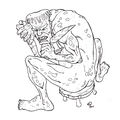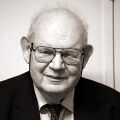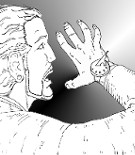Template:Selected anniversaries/October 14: Difference between revisions
No edit summary |
No edit summary |
||
| Line 1: | Line 1: | ||
<gallery> | <gallery> | ||
||1563 | ||1563: Jodocus Hondius born ... engraver and cartographer. | ||
||1641 | ||1641: Joachim Tielke born ... instrument maker. | ||
||1687 | ||1687: Robert Simson born ... mathematician and academic. | ||
||Cosimo Alessandro Collini | ||1727: Cosimo Alessandro Collini born ... historian and Voltaire's secretary from 1752 to 1756. Pic. | ||
||1801 | ||1801: Joseph Plateau born ... physicist and academic, created the Phenakistoscope. | ||
File:Jean-Louis_Pons.jpg|link=Jean-Louis Pons (nonfiction)|1831: Astronomer [[Jean-Louis Pons (nonfiction)|Jean-Louis Pons]] dies. He was the greatest visual comet discoverer of all time: between 1801 and 1827, Pons discovered thirty-seven comets, more than any other person in history. | File:Jean-Louis_Pons.jpg|link=Jean-Louis Pons (nonfiction)|1831: Astronomer [[Jean-Louis Pons (nonfiction)|Jean-Louis Pons]] dies. He was the greatest visual comet discoverer of all time: between 1801 and 1827, Pons discovered thirty-seven comets, more than any other person in history. | ||
||Friedrich Wilhelm Georg Kohlrausch | ||1840: Friedrich Wilhelm Georg Kohlrausch born ... physicist who investigated the conductive properties of electrolytes and contributed to knowledge of their behaviour. He also investigated elasticity, thermoelasticity, and thermal conduction as well as magnetic and electrical precision measurements. | ||
||Marcus Beck | ||1843: Marcus Beck born ... professor of surgery at University College Hospital. He was an early proponent of the germ theory of disease and promoted the discoveries of Louis Pasteur, Robert Koch, and Joseph Lister in surgical literature of the time. | ||
||Alessandro Padoa | ||1868: Alessandro Padoa born ... mathematician and logician, a contributor to the school of Giuseppe Peano. He is remembered for a method for deciding whether, given some formal theory, a new primitive notion is truly independent of the other primitive notions. | ||
File:Culvert Origenes.jpg|link=Culvert Origenes|1881: Writer and alleged troll [[Culvert Origenes]] calls [[Extract of Radium]] "a plague on all living things, and a curse on civilization." | File:Culvert Origenes.jpg|link=Culvert Origenes|1881: Writer and alleged troll [[Culvert Origenes]] calls [[Extract of Radium]] "a plague on all living things, and a curse on civilization." | ||
| Line 22: | Line 22: | ||
File:George Eastman.jpg|link=George Eastman (nonfiction)|1884: Inventor [[George Eastman (nonfiction)|George Eastman]] receives a U.S. Government patent on his new paper-strip photographic film. | File:George Eastman.jpg|link=George Eastman (nonfiction)|1884: Inventor [[George Eastman (nonfiction)|George Eastman]] receives a U.S. Government patent on his new paper-strip photographic film. | ||
||1888 | ||1888: Louis Le Prince films first motion picture: Roundhay Garden Scene. | ||
||1900 | ||1900: W. Edwards Deming born ... statistician, author, and academic ... Educated initially as an electrical engineer and later specializing in mathematical physics, he helped develop the sampling techniques still used by the U.S. Department of the Census and the Bureau of Labor Statistics. | ||
||Kurt Schütte | ||1909: Kurt Schütte born ... mathematician who worked on proof theory and ordinal analysis. The Feferman–Schütte ordinal, which he showed to be the precise ordinal bound for predicativity, is named after him. Pic. | ||
||1914 | ||1914: Raymond Davis Jr. born ... chemist and physicist, Nobel Prize laureate. | ||
||1932 | ||1932: Anatoly Larkin born ... physicist and academic. | ||
||1939 | ||1939: The German submarine U-47 sinks the British battleship HMS Royal Oak within her harbour at Scapa Flow, Scotland. | ||
||1947 | ||1947: Captain Chuck Yeager of the United States Air Force flies a Bell X-1 rocket-powered experimental aircraft, the Glamorous Glennis, faster than the speed of sound at Mach 1.06 (700 miles per hour (1,100 km/h; 610 kn) over the high desert of Southern California and becomes the first pilot and the first airplane to do so in level flight. | ||
File:J._R._Oppenheimer.jpg|link=J. R. Oppenheimer|1948: Musician and physicist [[J. R. Oppenheimer]] performs his hit song "Destroyer of Worlds" at the Grand Ole Opry, leading to his being summoned before the [[House Un-American Activities Committee (nonfiction)|House Un-American Activities Committee]]. | File:J._R._Oppenheimer.jpg|link=J. R. Oppenheimer|1948: Musician and physicist [[J. R. Oppenheimer]] performs his hit song "Destroyer of Worlds" at the Grand Ole Opry, leading to his being summoned before the [[House Un-American Activities Committee (nonfiction)|House Un-American Activities Committee]]. | ||
||1960 | ||1960: Abram Ioffe, Russian physicist and academic dies ... an expert in electromagnetism, radiology, crystals, high-impact physics, thermoelectricity and photoelectricity. He established research laboratories for radioactivity, superconductivity, and nuclear physics | ||
||1962 | ||1962: The Cuban Missile Crisis begins: A U.S. Air Force U-2 reconnaissance plane and its pilot flies over the island of Cuba and takes photographs of Soviet SS-4 Sandal missiles being installed and erected in Cuba. | ||
||1964 | ||1964: Martin Luther King Jr. received the Nobel Peace Prize for combating racial inequality through nonviolence. | ||
||1968 | ||1968: Apollo program: The first live TV broadcast by American astronauts in orbit performed by the Apollo 7 crew. | ||
||Norman Earl Steenrod | ||1971: Norman Earl Steenrod dies ... mathematician most widely known for his contributions to the field of algebraic topology. | ||
||1984 | ||1984: Martin Ryle dies ... astronomer and physicist, Nobel Prize laureate. | ||
||1986 | ||1986: Takahiko Yamanouchi dies ... theoretical physicist, known for group theory in quantum mechanics first proposed by Yamanouchi in Japan. | ||
||Walter Maurice Elsasser | ||1991: Walter Maurice Elsasser dies ... physicist considered a "father" of the presently accepted dynamo theory as an explanation of the Earth's magnetism. He proposed that this magnetic field resulted from electric currents induced in the fluid outer core of the Earth. Pic. | ||
||2008 | ||2008: Robert Furman dies ... engineer and intelligence officer. | ||
File:Benoit Mandelbrot.jpg|link=Benoit Mandelbrot (nonfiction)|2010: Mathematician [[Benoit Mandelbrot (nonfiction)|Benoit Mandelbrot]] dies. | File:Benoit Mandelbrot.jpg|link=Benoit Mandelbrot (nonfiction)|2010: Mathematician [[Benoit Mandelbrot (nonfiction)|Benoit Mandelbrot]] dies. | ||
||2011 | ||2011: Ashawna Hailey dies ... computer scientist and philanthropist. | ||
||2012 | ||2012: Gart Westerhout dies ... astronomer and academic. | ||
File:Blue City Sunset.jpg|link=Blue City Sunset (nonfiction)|2016: ''[[Blue City Sunset (nonfiction)|Blue City Sunset]]'' voted Picture of the Day by the citizens of [[New Minneapolis, Canada]]. | |||
</gallery> | </gallery> | ||
Revision as of 18:44, 2 October 2018
1831: Astronomer Jean-Louis Pons dies. He was the greatest visual comet discoverer of all time: between 1801 and 1827, Pons discovered thirty-seven comets, more than any other person in history.
1881: Writer and alleged troll Culvert Origenes calls Extract of Radium "a plague on all living things, and a curse on civilization."
1884: Inventor George Eastman receives a U.S. Government patent on his new paper-strip photographic film.
1948: Musician and physicist J. R. Oppenheimer performs his hit song "Destroyer of Worlds" at the Grand Ole Opry, leading to his being summoned before the House Un-American Activities Committee.
2010: Mathematician Benoit Mandelbrot dies.
2016: Blue City Sunset voted Picture of the Day by the citizens of New Minneapolis, Canada.






